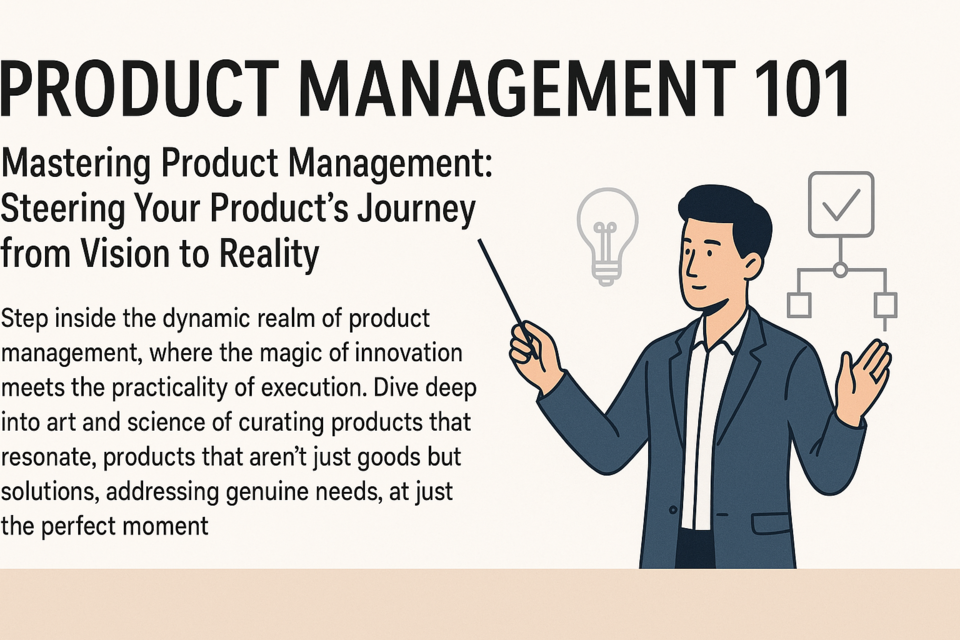What is a Lease
A lease agreement is a legally enforceable contract made between parties that consent to the agreement voluntarily, and expresses an exchange of promises each party agrees to perform, that is the way most laws interpret how you have defined the relationship between the property manager and tenant. It is important to determine the responsibilities, processes, and promises your tenant and you exchange. Write them down. A lease accomplishes two important facets of property management 1) explaining clearly, what is to be expected and, 2) providing a defensible position in the event of a dispute with a tenant. That is why it would be helpful if you can provide detailed conditions, especially when it comes to tenant obligations. Keep in mind that these are future conditions that are usually challenging to alter, add to, or remove once the agreement is signed.
Because the lease must meet legal standards, there cannot be unreasonable conditions placed on either party. Restrictions or requirements that appear unfair or unethical may void the contract (making it unenforceable). If any provision displays discrimination, it will likely not be held up in a court of law. However, most laws support reasonable conditions, such as a tenant being responsible for repairs because of his abuse or negligence. Consult federal, state, and municipal laws before creating conditions that may not be enforceable.
Creating a Lease
The conditions in a lease (called clauses) establish what is being exchanged and by whom, the rules of the tenancy, procedures for notifications, and dispute resolutions. The wording is important for legal purposes therefore each clause should be written clearly, but in plain, straightforward language. Many resources you can access can be helpful when creating a lease. Real estate lawyers advise against using "boilerplate" contract forms because some language or clauses may be unenforceable in different jurisdictions. Most jurisdictions recognize the following clauses (the headings may differ from lease to lease).
� Opening Declaration. States the parties in agreement, the date of the agreement, the rental address, and name, and may include the lease term (duration).
� Term. Defines the beginning and end of the rental period, the promise of availability, and can include a renewal period option.
� Rental Payments. States the amount, due date, and installments of the charges. Explains late fees and other charges, and may include a security deposit requirement.
� Security Deposit. Explains the amount, due date, reason for deposit, and conditions for return of an upfront deposit paid to cover damages or unusual wear caused by the tenant that must be repaired following lease termination.
� Pre-Occupancy Condition. Defines the condition the space is in prior to the rental, and may include an appliance or equipment list. Describes expectations upon lease termination.
� Use. Explains the way in which the space is to be used, such as housing or manufacturing. Describes prohibited uses and activities and potential consequences for misuse.
� Sublease or Assignment. Prohibits subleasing space or changing the parties involved in the agreement. Different arrangements require prior consent by manager or property owner.
� Alterations or Improvements. May prohibit any changes to the property by the tenant or might allow modifications after following an approval process, which usually includes a notification provision.
� Damages and Repairs. Assigns responsibilities and repair requirements following damage to the property. The tenant is generally responsible for damage he or she caused, while the manager will be required to repair damages caused by his neglect towards maintaining the property (called negligence).
� Utilities. Many leases require the tenant to be responsible for utility charges. For commercial properties, a lease may be on a triple net basis, which means that the business renting the space pays all costs associated with operations.
� Taxes. Seen more often in commercial leases, it states that the property owner is responsible for taxes related to the land, building, and personal property involved in rental activities. The tenant is responsible for his personal property taxes.
� Insurance. Explains the coverage extended on the property, which usually covers the land and building in the event of theft, damage, or destruction. Typically, the property manager or property owner does not cover the tenant�s personal property. Also explains where insurance certificates are located and when they can be viewed.
� Maintenance. Explains who is responsible for performing tasks associated with maintaining the property. Items such as lawn care, trash disposal, care of hallways and common areas, and snow removal may be included. In some states, the manager typically has few maintenance obligations beyond providing a habitable and safe property, but it is in his best interest to also maintain a secure, attractive, updated, and trouble free environment.
� Entry Rights. According to state laws, the property owner or manager has a right to inspect interior areas of the building. This defines the notification requirements, which generally require a notice to the tenant of at least 24 hours (except in case of emergency).
� Parking. Describes parking rights and space available for tenants. May list a monthly charge.
� Signs. Often used for commercial properties, describes the approved location(s), size restrictions, and other requirements for posting signs. May indicate a right by the property owner to refuse posting signs that are inappropriate, deceptive, and unattractive, or otherwise diminish the property's appeal.
� Default. Includes conditions, which put the tenant in default of the agreement, and often specifies what qualifies as non-payment of rent. Typically lists the procedure following a default claim.
� Disturbance (Quiet Possession). Entitles tenant to occupancy without interference from the manager, and requires tenant to occupy without creating disturbances or offensive behavior.
� Notices. Explains the procedures of communicating between parties. Typically includes contact information for all parties.
� Waiver. Defines the conditions where a party voluntarily relinquishes certain rights, claims and other actions against another party.
� Breach of Contract. Explains the conditions under which a party may be considered in breach of the agreement. May include the procedure following a claim of breach.
� Dispute Resolution. Outlines the steps that must be taken to resolve disputes between a manager and a tenant. See below for more detail.
� Performance. Explains that each party is committing to perform with a good faith effort, in accordance with applicable laws, and in the interest of safety and security of neighboring tenants. May indicate procedures in the event of non-performance.
� Compliance with Law. States that the conditions within the lease must be in accordance with state and local laws.
� Entire Agreement. Explains that all the terms and conditions included make up an entire agreement, and additional circumstances not listed are not considered a part of the signed contract. Generally protects you from unforeseen events.
� Termination. Describes conditions for terminating the lease, and explains what violations are grounds for immediate termination. Likely includes a procedure that will follow upon notification of termination.
� Signature Parties (Signatories). The final condition is for all interested parties to sign the agreement and indicate a date of signature. If a representative is used, the title or relation should be included, and it must be indicated within the agreement that an alternate signature is acceptable.
Lease Dispute Settlement Options
Property Maintenance
Five Types of Maintenance
What does maintaining the property mean? The Merriam-Webster Dictionary defines maintain as "to keep in an existing state�preserve from failure or decline." Managers can be responsible for both the appearance and structure of the property. Replacing a gutter, planting a tree, painting a room, and installing a security system are all examples of property maintenance. Property maintenance falls into five distinct categories.
1. Routine Maintenance. This activity is the most frequently done, typically affecting the appearance of the property. Tasks include cleaning common areas, lawn care, and security patrols. Requires low skill level.
2. Preventative Maintenance. These steps preserve the proper working order of systems or the integrity of structures or landscape to avoid deterioration or damage, and to escape costly repairs. Managers can uncover issues while conducting inspections. Tasks include planting bushes to prevent erosion or annual furnace cleaning. Requires moderate skill level.
3. Corrective Maintenance. Includes repairs or replacement of poorly functioning equipment, fixtures, or structural elements that require immediate attention. Most often is the responsibility of the manager. Tasks include window repair, toilet replacement, and air conditioning work. Requires moderate to advanced skill level.
4. Construction Maintenance. This activity can lead to higher profit and happy tenants. Involves improving, updating, or modifying the property and projects are typically planned out. Common tasks include replacing fixtures, new paint, carpeting, and window installation. Larger projects, such as building a meeting room or installing a pool are also considered property maintenance. Requires moderate to advanced skill level.
5. Deferred Maintenance. This type can get you into trouble, but at times there may be legitimate reasons to put off a maintenance project. By delaying maintenance, you risk further deterioration or damage, poor tenant relations, and potential safety issues. Tasks include lack of heating system inspections or not replacing broken locks. Requires no skill level.
Focus Areas
Each property type and location will involve unique needs. The climate, population, regulations, and culture of a region can differ, and can have an effect on your maintenance approach. Nevertheless, income properties everywhere have common focus areas that require attention. You should consider two important factors when determining how you will handle maintenance, your time, and your ability to do the work. Some tasks may become time consuming if you do not have appropriate training, skills, or experience. There are six key areas that typically require maintenance at one time or another (see figure 8-1). Before you decide to do-it-yourself or hire a 'pro', estimate what ordinary tasks will cost, both materials and labor, and determine if it will be more profitable for you to provide the labor. Keep in mind that mistakes or poor workmanship may cost you more in the future.
|
Area |
Required Maintenance |
Common Tasks |
Frequency |
Skills or Knowledge |
|
Interior |
Routine Preventative Corrective Construction |
Cleaning, Painting. Clearing plumbing. obstructions, Repair or replace fixtures, Carpentry. |
Daily Weekly Monthly As needed |
Low to intermediate. |
|
Exterior |
Routine Preventative Corrective Construction |
Cleaning, Painting, Roof and exterior repair, Window placement or repair, Lawn mowing, Plants management, Snow removal, Waste removal. |
Weekly Seasonally Annually As needed |
Low to high. |
|
Electrical |
Preventative Corrective Construction |
Outlet and fixture repair and installation, Update or repair wiring, Power source connection. |
As needed |
Intermediate to high. |
|
Plumbing |
Preventative Corrective Construction |
Repair or replace fixtures, clearing clogged pipes, leak repair, shower, sink, and toilet installation. |
As needed |
Intermediate to high |
|
Heating and Cooling System |
Preventative Corrective Construction |
Repair or replace system components, Cleaning, System installation. |
Seasonally Monthly Annually As needed |
Intermediate to high. |
|
Appliances and Equipment |
Routine Preventative Corrective Construction |
Component repair or replacement, Cleaning, Installation. |
Seasonally Annually As needed |
Low to high. |
Figure 8-1. Key Areas Requiring Maintenance
If corrective maintenance is needed because of tenant activities, your lease should require the responsible party to arrange, and pay for, repairs. You can assist the responsible party by offering to perform the work and charge them accordingly. Or you can recommend those who do maintenance work for you (this can help your relationship with contractors by sending them work). In the event that the tenant is allowed to perform maintenance that affects the integrity or working order of the property, make sure that the tenant waives any right to make claims against management or ownership and, if the maintenance is unsatisfactory or causes damage, then he is responsible for returning the affected area to the state it was in prior to the need for maintenance.
























